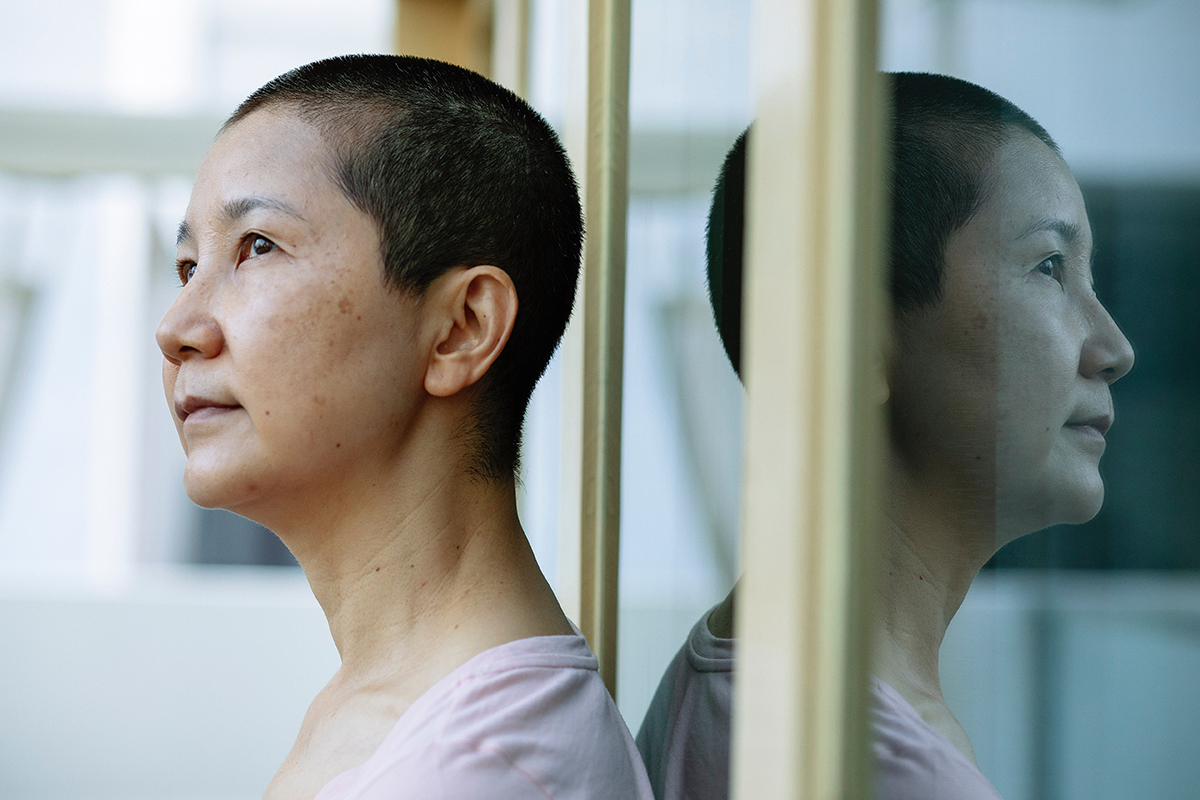Ovarian cancer is the seventh most commonly occurring cancer in women worldwide, and causes more deaths than any other type of female reproductive cancer. In the United States, it ranks fifth in cancer deaths among women. Certain risk factors can increase the chances of an individual developing ovarian cancer, one being age. Though the cancer risk increases as a person gets older, it is still possible to develop ovarian cancer at any age. Two thirds of those diagnosed with ovarian cancer are age 55 or older, but having a family history of ovarian, breast, uterine, prostate or colorectal cancer can increase your risk of developing it at a younger age.
Can you get ovarian cancer in your teens, 20s, and 30s?
Ovarian cancer is rare in people under 40, and particularly rare in girls and young women between the ages of 15 and 19, but it can occur.
There are four main types of ovarian cancer—epithelial tumors, germ cell tumors, stromal cell tumors, and small cell carcinoma. Germ cell tumors, which typically affect one ovary, are the most common type of ovarian cancer found in teenage girls and young women, as well as young trans men and non-binary people. While this type of cancer generally doesn’t cause noticeable symptoms in the early stages, some individuals may have abdominal and urinary symptoms. Fortunately, germ cell cancers tend to have a good prognosis when treated.
According to the National Cancer Institute, between 2015 and 2019, the percentage of new cases of ovarian cancer was 1.4% for individuals 20 and under, and 4.4% in individuals aged 20-34.
Risk of developing ovarian cancer at a young age
In terms of age, you’re at increased risk of developing ovarian cancer younger if you:
- Have breast cancer before age 40
- Have a family history of breast, ovarian, uterine, prostate, or colorectal cancer before age 50
- Are of Ashkenazi or Eastern European Jewish ancestry, as BRCA mutations are more common among this group
- Have endometriosis
- Experience early menstruation
What’s your risk of developing ovarian cancer in your 40s?
As mentioned earlier, a person’s risk of developing ovarian cancer increases with age. About 90% of those who get ovarian cancer are older than 40, with the greatest number of cancers occurring in women aged 60 years or older.
For women, trans men and non-binary people aged 35-44, the percentage of new cases of ovarian cancer between 2015 and 2019 was 7%, and for those aged 45-54 the percentage of new cases was 16.3%.
Women who have their first full-term pregnancy after 35 or who never carried a pregnancy to term are at greater risk of developing ovarian cancer.
What’s your risk of developing ovarian cancer in your 50s and 60s?
Over two-thirds of those diagnosed with ovarian cancer are 55 or older, and nearly half of all cases are women 65 years of age or older, with 63 being the median age at diagnosis. Menopause usually starts around age 50, but those who start menopause after age 55 may be at increased risk of developing ovarian cancer. Between 2015 and 2019, the highest percentage of new ovarian cancer cases was in people ages 55-64, at 24.4%.
What’s your risk of developing ovarian cancer in your 70s and older?
Unfortunately, individuals who are elderly and/or frail with ovarian cancer have a significantly worse prognosis. Consequently, older women are more likely to present with advanced disease and are less likely to be offered radical surgery and chemotherapy.
From 2015-2019, the percentage of new ovarian cancer cases in individuals aged:
- 65-74 was 23.8%.
- 75-84 was 15.4%, (less than the 45-54 age group)
- 84+, was 7.2%, (a little above the 35-44 age group)
The rate of ovarian cancer deaths is highest among women ages 65-74.
Lowering your risk of ovarian cancer
There is no known way to prevent ovarian cancer, but certain medical choices may lower your chances of developing it.
- Using birth control pills for five or more years.
- Having a tubal ligation (getting your tubes tied), both ovaries removed, or a hysterectomy (an operation in which the uterus, and sometimes the cervix, is removed).
- If you are at average risk for ovarian cancer and have a planned pelvic surgery, ask your doctor about an opportunistic salpingectomy (OS). An opportunistic salpingectomy removes the fallopian tubes and leaves the ovaries intact. Research suggests this procedures can prevent most high-grade serous ovarian cancers (HGSOC) that arise in the fallopian tubes.
- If you are at increased risk for ovarian cancer and are done with childbearing, you should consider removal of both fallopian tubes and ovaries, called a bilateral salpingo-oophorectomy. Alternatively, a bilateral salpingectomy removes just the tubes and keeps the ovaries in place, avoiding surgical menopause. This procedure has also been shown to lower risk.
- Pregnancy. Multiple pregnancies or having first full-term pregnancy before the age of 26 decreases risk.
- Breastfeeding. Some studies suggest that women who breastfeed for a year or more have a reduced risk of ovarian cancer.
It’s important to keep in mind that there are risks and benefits associated with each of these measures, so it’s important to discuss ways to reduce risk with your doctor.
Key Takeaway
Compared to other cancers, ovarian cancer is relatively rare. Symptoms may include abdominal swelling or bloating, pelvic pain, frequent urination, fullness or loss of appetite, or constipation or other bowel changes. There is no guaranteed way to prevent ovarian cancer, and those who have their ovaries removed may still have a small risk of peritoneal carcinoma. So it’s important to know your personal risk, and talk to your doctor especially if you have persistent symptoms and/or a family history of ovarian, breast, uterine, prostate, or colorectal cancer.
If you or someone you know has been diagnosed with ovarian cancer and are looking for support, our team at OCRA is here for you every step of the way. Contact us today→ https://ocrahope.org/patients/


